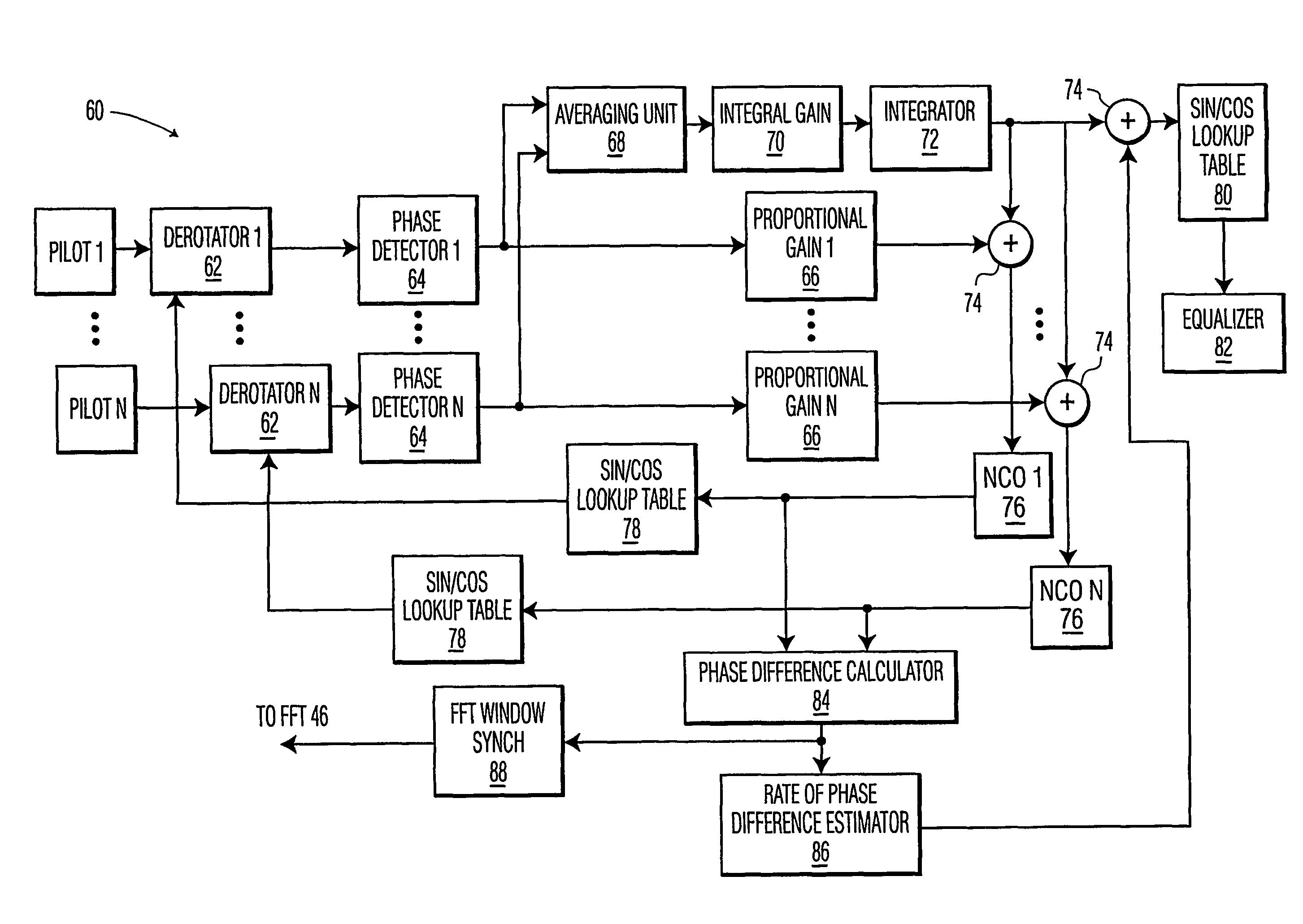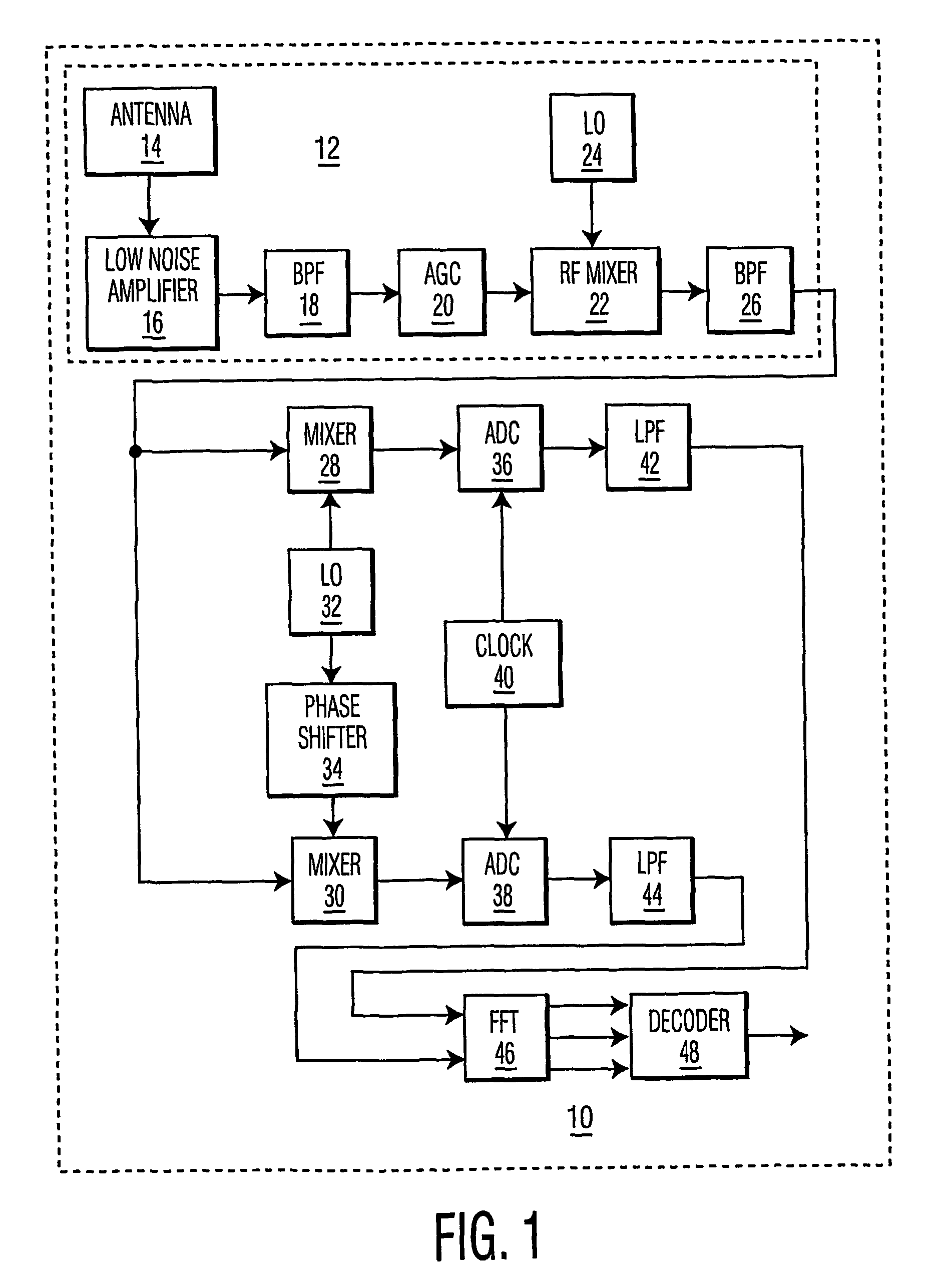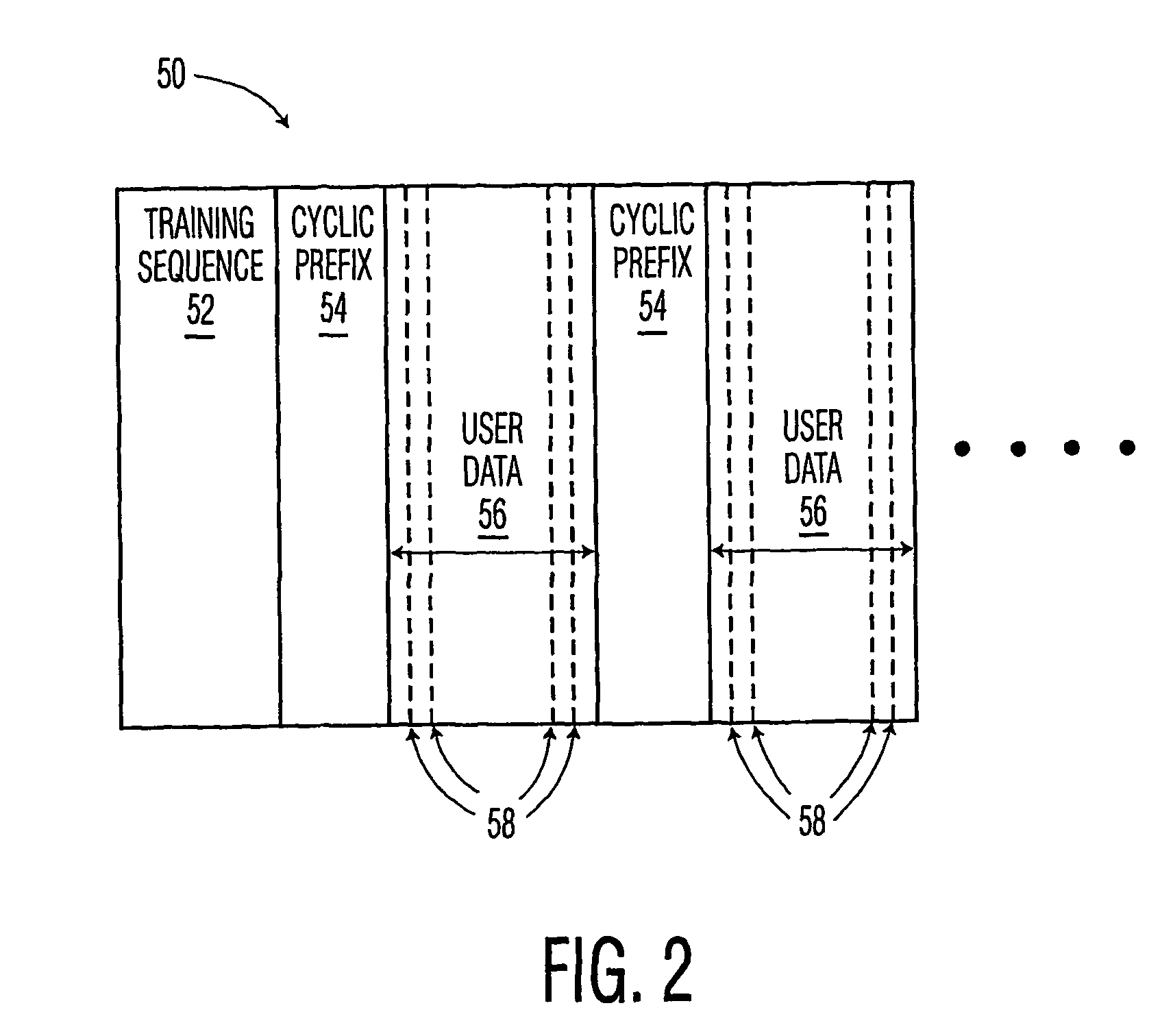Method and system for compensation of a carrier frequency offset in an OFDM receiver
a carrier frequency offset and receiver technology, applied in the field of processing orthogonal frequency division multiplexed (ofdm) signals, can solve the problems of carrier frequency determination and correction, inter-carrier interference (ici), and severe increase in the bit error rate (ber) of recovered data at the receiver, so as to facilitate the constructive averaging of pilot phase information and clean frequency offset estimation
- Summary
- Abstract
- Description
- Claims
- Application Information
AI Technical Summary
Benefits of technology
Problems solved by technology
Method used
Image
Examples
Embodiment Construction
[0017]The characteristics and advantages of the present invention will become more apparent from the following description, given by way of example.
[0018]Referring to FIG. 1, the first element of a typical OFDM receiver 10 is an RF receiver 12. Many variations of RF receiver 12 exist and are well known in the art, but typically, RF receiver 12 includes an antenna 14, a low noise amplifier (LNA) 16, an RF bandpass filter 18, an automatic gain control (AGC) circuit 20, an RF mixer 22, an RF carrier frequency local oscillator 24, and an IF bandpass filter 26.
[0019]Through antenna 14, RF receiver 12 couples in the RF OFDM-modulated carrier after it passes through the channel. Then, by mixing it with a receiver carrier of frequency fcr generated by RF local oscillator 24, RF receiver 12 downconverts the RF OFDM-modulated carrier to obtain a received IF OFDM signal. The frequency difference between the receiver carrier and the transmitter carrier contributes to the carrier frequency offse...
PUM
 Login to View More
Login to View More Abstract
Description
Claims
Application Information
 Login to View More
Login to View More - R&D
- Intellectual Property
- Life Sciences
- Materials
- Tech Scout
- Unparalleled Data Quality
- Higher Quality Content
- 60% Fewer Hallucinations
Browse by: Latest US Patents, China's latest patents, Technical Efficacy Thesaurus, Application Domain, Technology Topic, Popular Technical Reports.
© 2025 PatSnap. All rights reserved.Legal|Privacy policy|Modern Slavery Act Transparency Statement|Sitemap|About US| Contact US: help@patsnap.com



